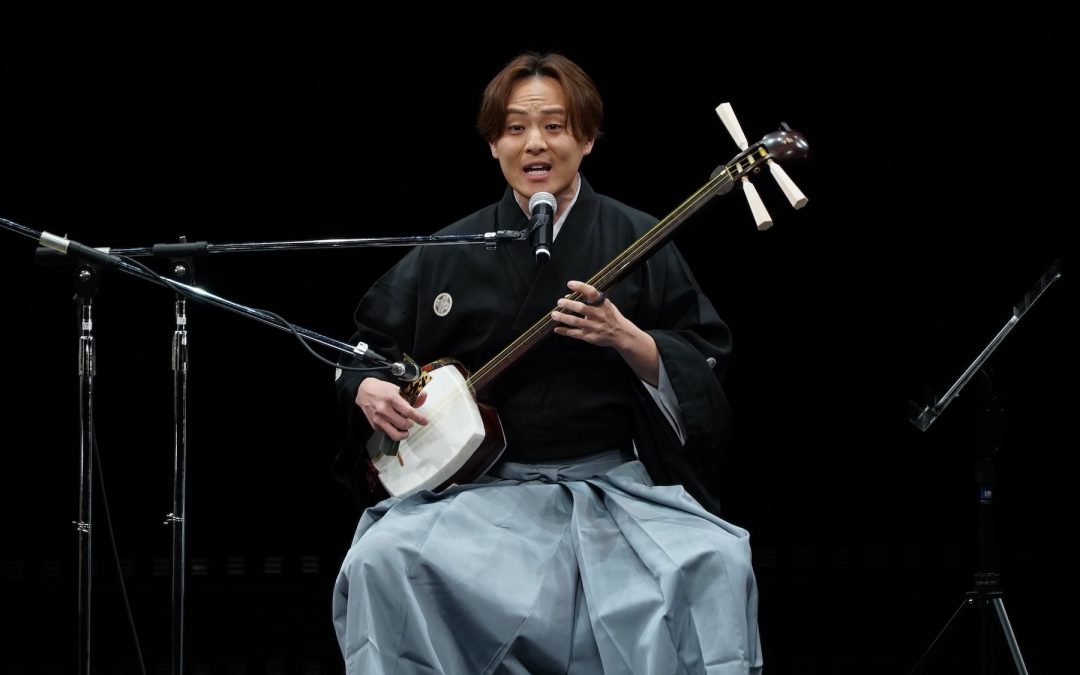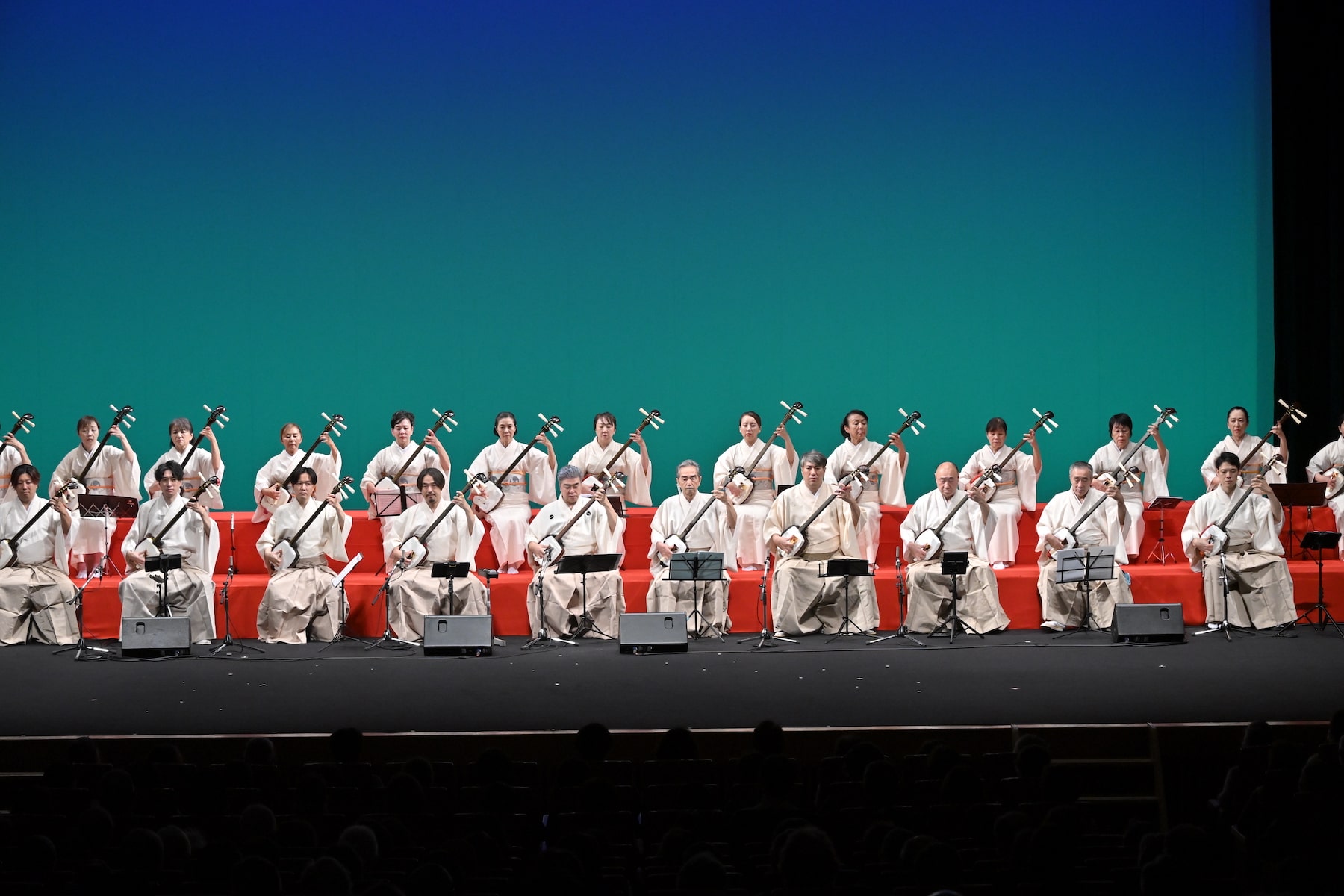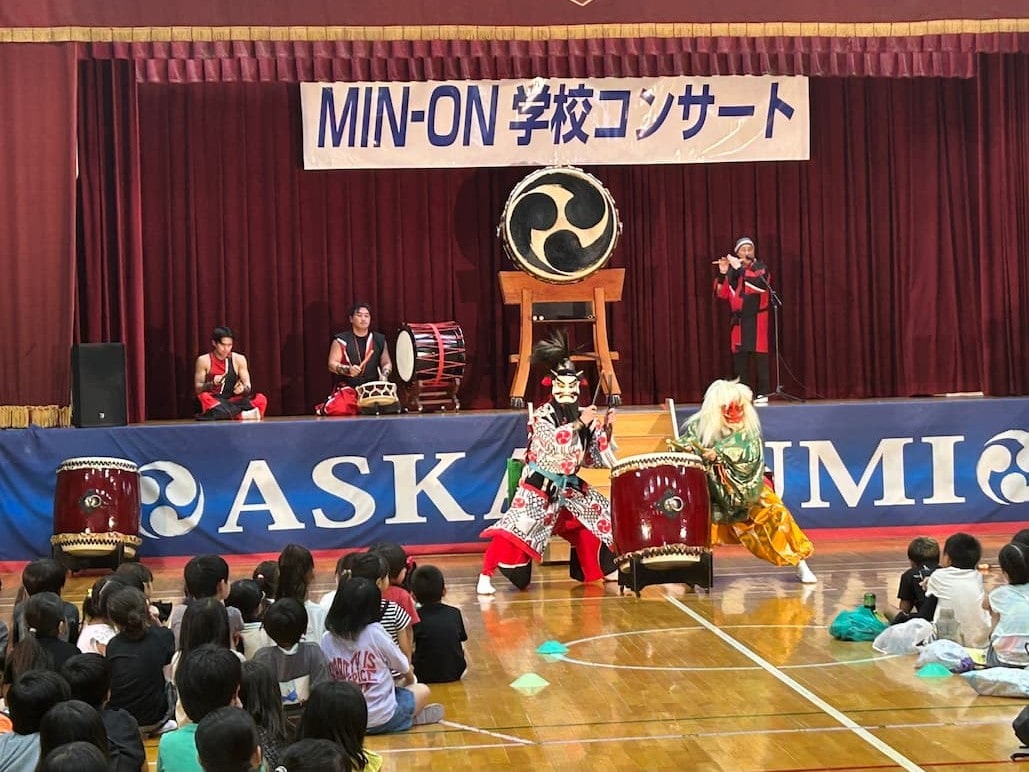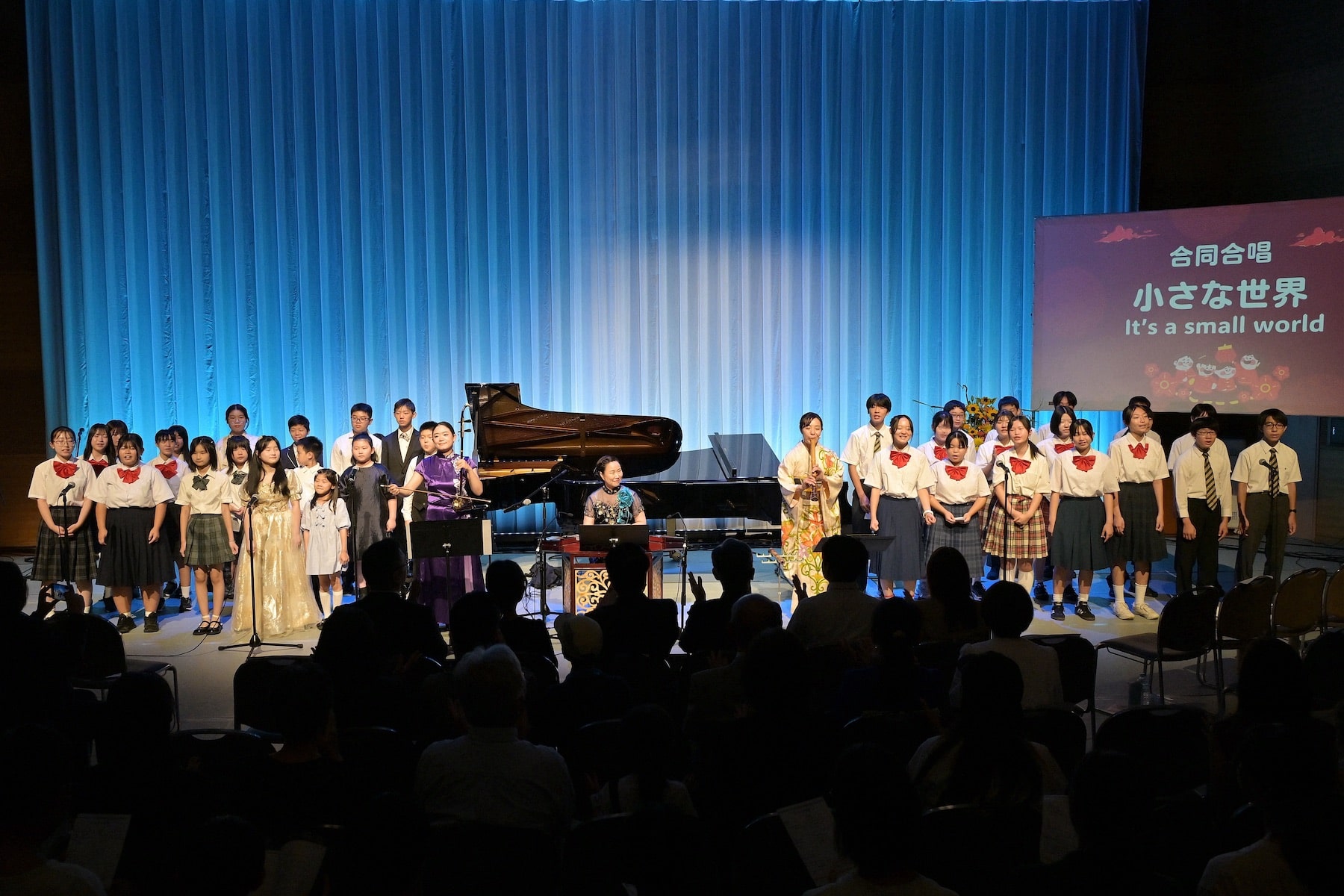In celebration of the 60th anniversary of the normalization of diplomatic relations between Korea and Japan, the Korea–Japan Youth Concert 2025 was held in April this year in Tokyo and Osaka.
We had the opportunity to interview Sho Asano, a leading Tsugaru-shamisen artist from Japan, who performed in the concerts with musicians from both countries.
This is the second of the interview series featuring artists and organizers who participated in the event.
Our guest this time is Sho Asano, a virtuoso known for his trailblazing work in both traditional and contemporary Tsugaru-shamisen music.
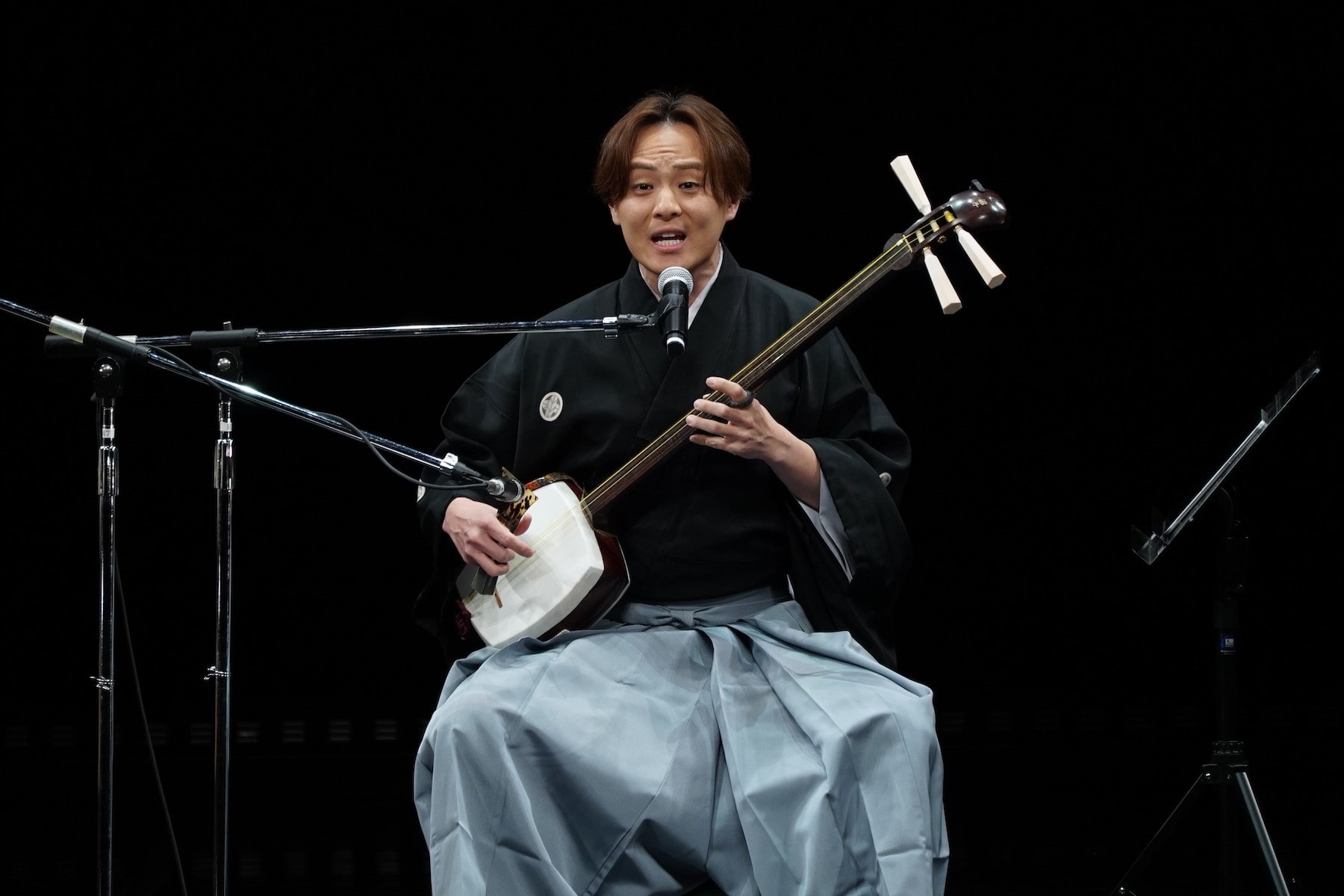
Profile
Sho Asano / Tsugaru-shamisen
Inspired by his grandfather, Asano began playing Japanese drums at the age of three, and started playing the Tsugaru-shamisen at five. Asano studied the shamisen under Sangen Odashimaryu Tokuo ODASHIMA the second. At the age of seven, he was the youngest performer at the Tsugaru-shamisen World Convention and later won top titles for three consecutive years, earning his induction into the Tsugaru-shamisen Hall of Fame.
Making his major debut with Victor Entertainment at the age of 17, Asano has in recent years, promoting Japanese culture domestically and internationally, participating in the Nippon Takaramono Project and the government’s “beyond 2020” program. He is a solo performer dedicated to spreading the fascination of Tsugaru-shamisen through traditional music and his original pieces.
- Full Concert Video: Korea – Japan Youth Concert 2025
Min-On: Thank you very much for sharing your time to be interviewed. What is your impression of the concerts?
Sho Asano: I’m enjoying a richer and more fulfilling experience than I had imagined. I think the Korean musicians’ musicality and personalities are a major factor in creating an atmosphere where we were able to end the performances with a smile. We felt that the Korean musicians expressed their affection for Japan and we, too, expressed our affection and respect towards them and felt a sense of connection as we played together. We really had a wonderful time.
Min-On: What were the similarities and or differences you found with Korean and Japanese traditional instruments and musical expression?
Sho Asano: As for common points, I think that being in sync with each other without using words were very similar. While everyone was reading the notes while playing, there were unique pauses in the Korean song “Arirang” and the Japanese “Donpan-bushi” which cannot be expressed in the notes. When we started playing, at first, we had to adjust to each other’s music but as we continued, I was surprised how naturally we connected musically. Maybe it’s because we’re both playing music that has its roots in the local communities.
The shape of our instruments and the way we play it is similar too. For example, the Wadaiko played by Mr. Sakamoto and the Korean Janggu are very similar in that the performer holds two sticks and hits both sides of the instrument. The same is said of the Gayageum and the Koto, although these instruments were not played in the concerts this time. I couldn’t help but feel the deep connection we mutually have in the history of our music. I think this is probably why we were able to play in sync with each other.
The eye contact we had with each other was also very impressive. I think the audience must have felt a kind of “unspoken communication” between the performers.

Min-On: You’ve achieved remarkable milestones in your music career from a young age. Looking back, what would you say was the biggest turning point in your musical journey?
Sho Asano: The biggest turning point was when I was 16. I performed in a competition but there was a rule that if I won that year, I had to “graduate” from that competition due to the record I created by winning consecutively. I had been playing the Shamisen solely for national competitions, so if I won and “graduated” from that competition, I had no clue as to what my next goal would be. It was then that I met my mentor in life and my fellow musicians that shaped me to what I am today. Through these encounters, I found new paths and goals to aim for. Looking back now, I suppose it was that time when I was sixteen years old that became a turning point in my life.

Min-On: When collaborating across musical genres or with artists from other countries, what do you prioritize to create a meaningful connection?
Sho Asano: What’s important to me is not to perform superficially.
For example, when playing Korean music, I know that there is a three-beat rhythm in Korean music. But I see to it that I fully understand the detailed sound composition within those three beats before I start playing. If I play just by reading the notes, it doesn’t match the groove of the song and I’ll end up playing out of formality and without truly connecting with each other which is something I want to avoid at all costs. So, I make sure to communicate with the musicians thoroughly in advance by engaging in conversation from music to trivial matters. By doing so, I always feel that we can achieve deeper communication through music.
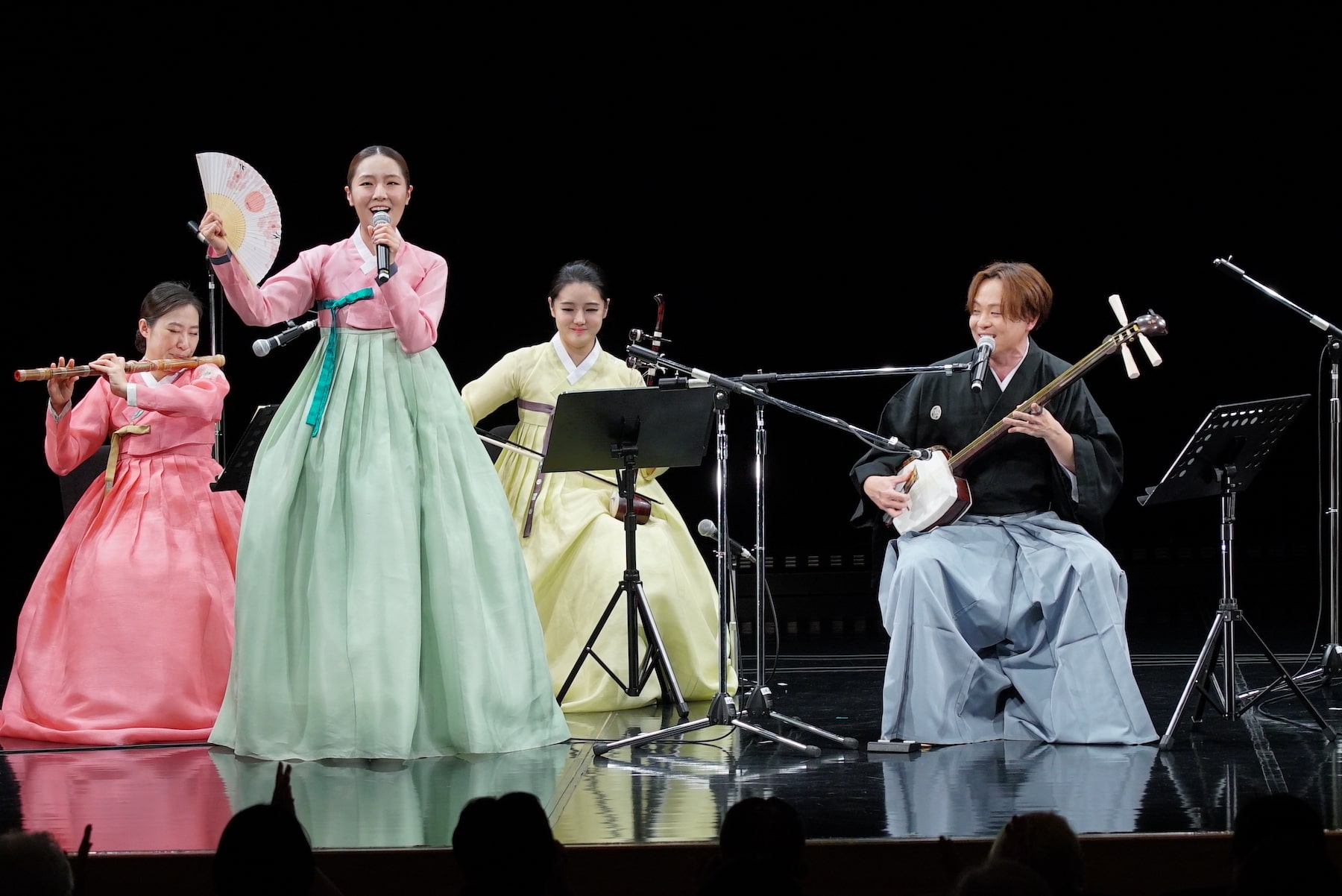
Min-On: What aspects of Tsugaru shamisen do you think are most appealing to those who are new to it?
Sho Asano: The Tsugaru shamisen is one genre of Japanese Shamisen music. There are actually various types of Shamisen, such as those used in Bunraku and Rakugo, and each has its own style of playing, like how the piano is played in jazz or in classic music.
The Tsugaru shamisen was originally used to accompany folk songs in the Tsugaru region of Aomori Prefecture, and its primary function is to accompany singers.
The singer performs with great freedom, and we respond by accompanying in a similarly free style, gradually building the energy. I think that’s the defining feature of our Shamisen performance.
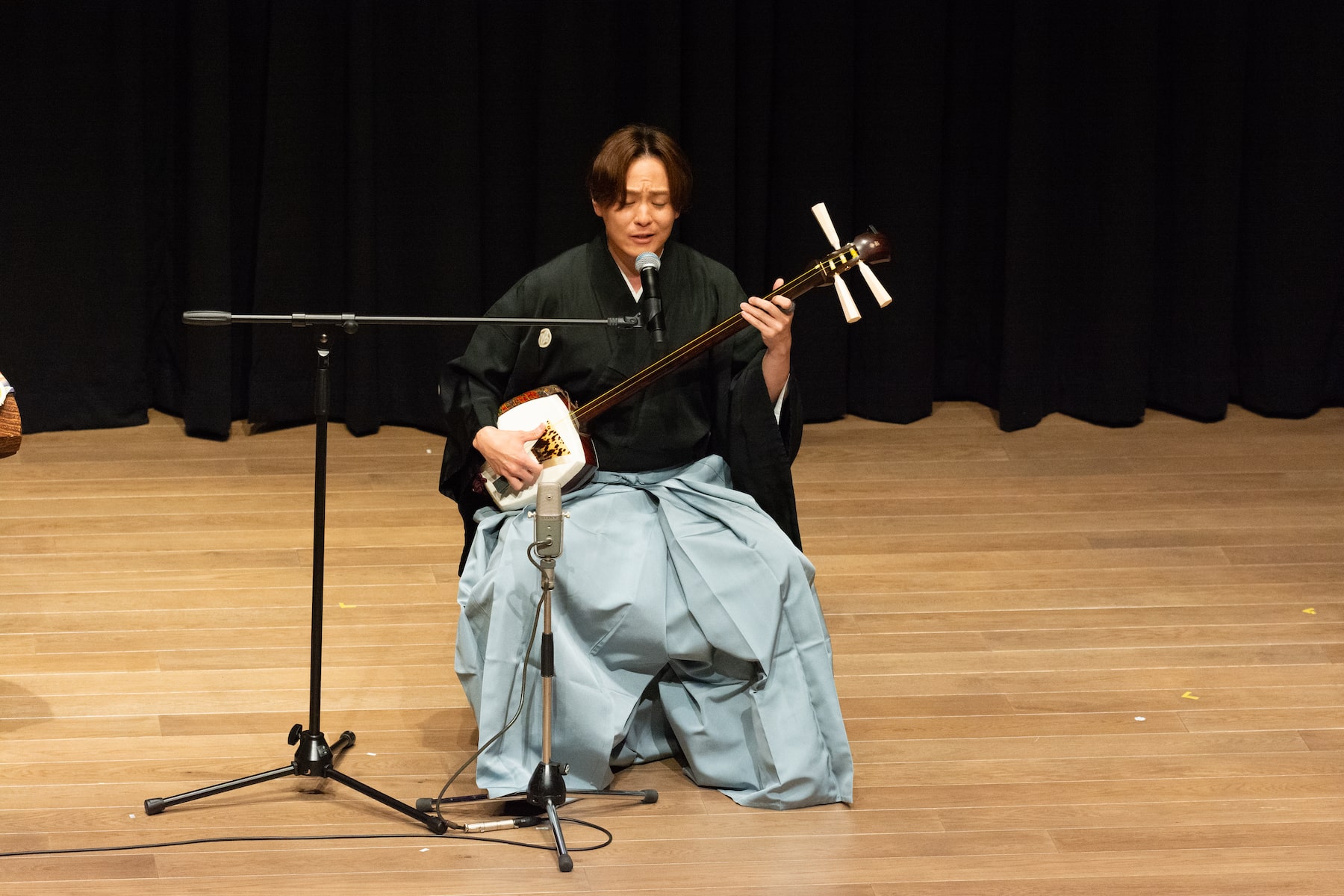
These days, solo performance styles have also become popular, and even in those cases, everything is completely free. It’s an instrument that allows for highly improvisational and expressive playing, where you weave together the sounds you feel at the moment.
Even when playing the same piece, “Tsugaru Jongara Bushi,” no two players will ever play the same. This kind of freedom is exactly what makes Tsugaru shamisen so interesting and, in my opinion, one of its greatest attractions.
Min-On: Lastly, could you share a message with our readers and to those who came to the concert?
Sho Asano: Cultural exchange and bringing wonderful musicians to Japan who want to come but can’t on their own are wonderful initiatives but not easy to realize even though there is a desire to do so. The undertaking to invite musicians from around the world to Japan is unique to Min-On, and I have been greatly supported by them since I was a teenager.
Actually, in the beginning, I wasn’t fully aware that it was a concert to commemorate the 60th anniversary of diplomatic ties between Korea and Japan. But taking part in this initiative made me realize its significance.
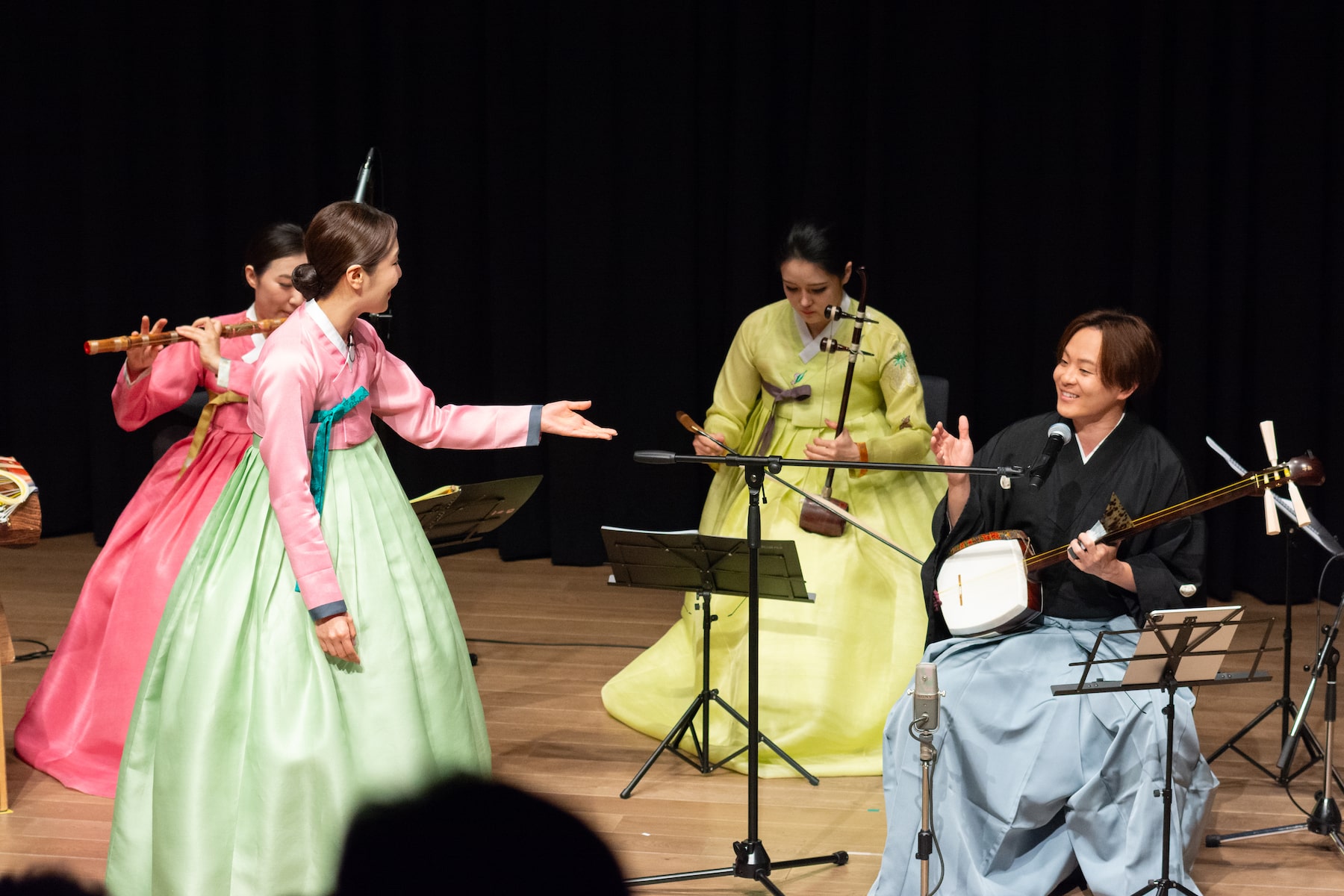
Once again, I am deeply grateful for this opportunity to be a part of celebrating the milestone of the 60th anniversary of the normalization of diplomatic relations between Korea and Japan, and for being able to dialogue with everyone through music and to make the audience happy.
I hope these activities will continue, and I look forward to working with musicians from around the world again in the future. I truly hope our readers will come to the venue and experience the “live dialogue of music” firsthand.
◆ Please enjoy the full interview below:
- Full Concert Video: Korea – Japan Youth Concert 2025
◆ Min-On Music Journey: South Korea Edition
The Korea Edition of the Min-On Music Journey beautifully showcases the charm of Korean culture and music.
Embark on this cultural journey through the following link:
If you have any comments regarding this article, please feel free to email us at: publicrelations@min-on.or.jp
Min-On Concert Association
–Music Binds Our Hearts–


